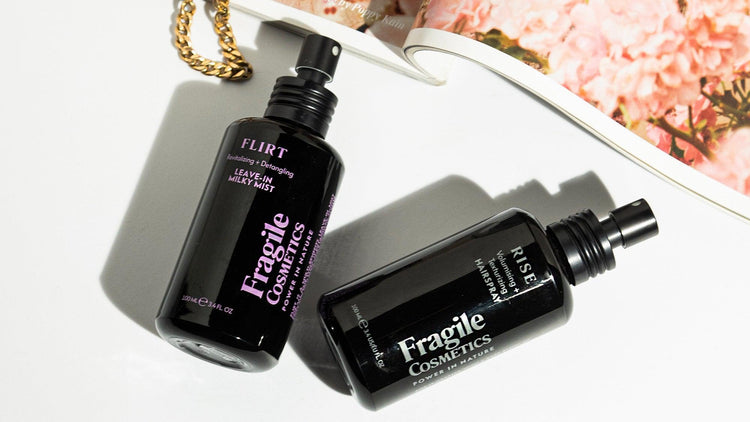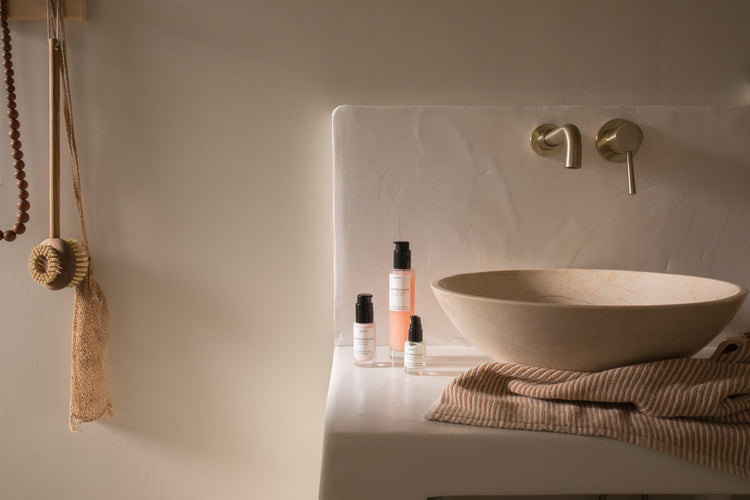Discover them:
Organic (chemical) filters
You also know them as “chemical filters”. These carbon filters have the ability to absorb the most harmful radiation, which they then disperse in the form of heat (of course, it's imperceptible). Their absorption spectrum is more or less broad: depending on their formula, they can be effective against UVA, against UVB or against these two types of UV rays at the same time.
Examples of chemical filters authorized in Europe
- Octocrylene (INCI: octocrylene), active against UVB.
- Octisalate (INCI: ethylhexyl salicylate), active against UVB.
- Ethoxylated ethyl-4-aminobenzoate (INCI: PEG-25 PABA), active against UVB.
- Ecamsule (INCI: Terephthalylidene dicamphor sulfonic acid), active against UVA.
- Bisoctrizole (INCI: Methylene bis-benzotriazolyl tetramethylbutylphenol), active against UVA and UVB.
- Bemotrizinol (INCI: bis-Ethylhexyloxyphenol methoxyphenyl triazine), active against UVA and UVB.
Their advantages
- They are numerous (around twenty), and therefore quite widespread and easy to find (especially in drugstores or in your supermarkets).
- They are sensory: they allow you to create many different textures (milk, spray, foam, stick, etc.) and are pleasant to use on a daily basis.
- They do not leave white marks: they blend into the skin evenly and naturally, without creating a mask effect.
Their disadvantages
- Some are more irritating or even allergenic than others, especially if you have sensitive or atopic skin (eg: avobenzone, Butyl Methoxydibenzoylmethane on the INCI).
- Some are suspected of being endocrine disruptors, such as oxybenzone (Benzophenone-3 on the INCI).
- Some can leave traces in the blood system. Among the filters at the heart of the controversy, we find octinoxate, octisalate and homosalate.
- Some are harmful to marine life (involved in coral bleaching, among other things).
🛒 Our treatments with organic filters
We do not have it ! At Happy Officine, we have chosen not to open our shelves to sunscreen products that contain chemical filters. This is essentially a precautionary principle: at a time when several of them are in the hot seat, we find it wiser and more reasonable to leave them aside while waiting for studies to confirm or refute the controversies in question. traffic. Instead, we offer treatments based on mineral filters, with formulas that are as sensory as they are elaborate that you will enjoy applying every day.
Inorganic (mineral) filters
You know them as “physical filters”. These are in fact minerals, photostable particles which are deposited on the skin. Contrary to popular belief, they do not simply form an opaque barrier which reflects ultraviolet rays when they “hit” the skin. Just like organic filters, they also have the capacity to absorb and then dissipate radiation.
The two mineral filters authorized in Europe
- Zinc oxide (INCI: zinc oxide), active against UVA and UVB.
- Titanium dioxide (INCI: titanium dioxide), active against UVA and UVB.
Their advantages
- They are generally better tolerated by sensitive and reactive skin, including that of children (finer and more delicate than that of adults).
- They are the subject of much less controversy than chemical filters.
- They offer a level of protection equivalent to that of conventional (organic) UV filters.
Their disadvantages
- They sometimes leave white marks on the skin. The good news is that the formulas have improved greatly to offer almost imperceptible finishes on all skin tones, whether light or dark.
- They may contain nanoparticles. It is precisely to limit this whitening effect that certain brands use physical sun filters in nanoparticle form. Nano filters are, however, criticized for their ability to pass the skin barrier (because their molecules are infinitely smaller!) In Europe, they are banned in spray products. In the others, manufacturers are now required to indicate “nano” in the list of ingredients: they are therefore easy to spot.
- They wouldn't be all white for the corals. Even if other studies remain necessary, limiting the impact of solar energy on seabed life remains a problem common to organic filters and inorganic filters.

🛒 Our mineral filter treatments
- LE RUB daily sun cream : designed to protect the face on a daily basis, it is formulated with non-nano zinc oxide and enriched with care active ingredients, in particular fermented grape extract which supports the synthesis of vitamin D during 'Sun exposure.
- Clean Freak Solara Suncare Sunscreen : Designed for the body, this sunscreen is formulated with non-nano zinc oxide (20%) as well as anti-crocodile oils, butters and plant extracts. It is fragrance-free and water resistant for 40 minutes.
- Mineral Drops Odacité Tinted Sunscreen : This facial sunscreen contains 12% non-nano zinc oxide. Halfway between sun protection, day care and light foundation, it is optimized by intelligent pigments which adapt to the color of the skin, for a natural enhancing finish without white marks.

The SPF index: against UVB
SPF stands for “Sun Protection Factor”. A product's SPF rating indicates its UVB absorption capacity. As a reminder, UVB are rays that penetrate the skin shallowly, but are responsible for sunburn. These are the ones that “burn” the upper layers of the epidermis. They are also the cause of tanning (UVA activity on this point is not zero, but less).
The bottom line: The higher the SPF rating of your product, the more UVB rays it will block.
-
SPF15: it absorbs around 93% of UVB rays (and therefore lets 7% pass through). This is low to medium protection. It is rather recommended for black skin, which already has a natural parasol (melanin) that is more effective than that of white skin against UV rays.
Example: Solara SPF15 lip balm, with a deliciously nourishing and comfortable texture. -
SPF30: it absorbs around 97% of UVB (and therefore allows 3%) to pass through. This is high protection. It may be suitable for daily application in winter for fair skin or in summer for dark skin.
Example: Evolve's Climate Defense SPF30 sunscreen , formulated with 99.3% ingredients of natural origin (including antioxidant lingonberry stem cells). - SPF50: it absorbs around 98% of UVB (and therefore allows 2%) to pass through. It is also high protection. It is the one that we recommend in summer for fair to very fair skin. It is also interesting for medium skin when the solar radiation is very strong (on water or snow, in the Tropics, at altitude, between 11 a.m. and 4 p.m.). Example: Indie Lee's SPF50 foundation , which illuminates the complexion with subtle golden highlights with a velvety finish.
- SPF 50 +: these are products that have an SPF greater than 60. This is very high protection designed primarily for very white or sun-allergic skin.
The PA index: against UVA
Regarding protection against UVA, it is the PA index (Protection Grade) that you need to look at. UVA penetrates deeper than UVB. They reach the dermis, cause mutations in our cells, and degrade our collagen and elastin fibers. They are the ones responsible for photoaging (brown spots, wrinkles, etc.). And they even go through windows...
What you should remember: the PA index (from PA+ to PA++++) is still little used in Europe. However, if you see a small circle marked “UVA” on your sunscreen, this means that the UVA protection of the product concerned is equal to at least 1/3 of that of the SPF. For example, in the case of SPF50 sunscreen, this would be equivalent to UVA protection of 16.
Our favorite: Mineral Drops SPF 50 from Odacité, which benefits from an objective PA++++, namely the strongest protection available to date against UVA.
The right steps to properly apply your sun care
It doesn't matter whether you opt for chemical filters or mineral filters, SPF15 or SPF50, whether you are 20 years old or 60 years old, whether you have little exposure to the sun or whether you live in California. The recommendations for using your sunscreen product are always the same.
- Apply your sunscreen as the last step of your skincare routine, over your day cream.
- Allow 2 mg of product per cm2 of skin: this is the dose which is supposed to ensure the level of UVA + UVB protection indicated on the packaging of your product. This represents approximately ¼ teaspoon of product, or a stroke the length of two fingers for fluid textures.
- Reapply your sunscreen regularly: especially in the event of prolonged exposure, swimming, perspiration or intense radiation.













